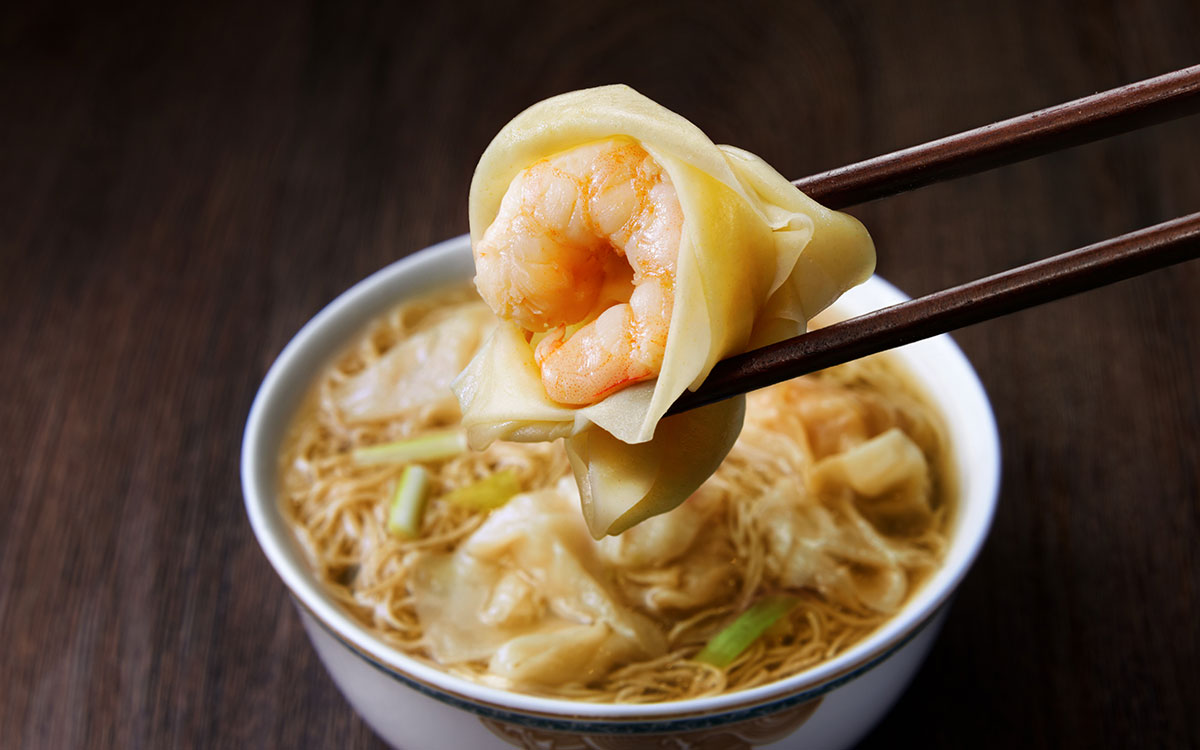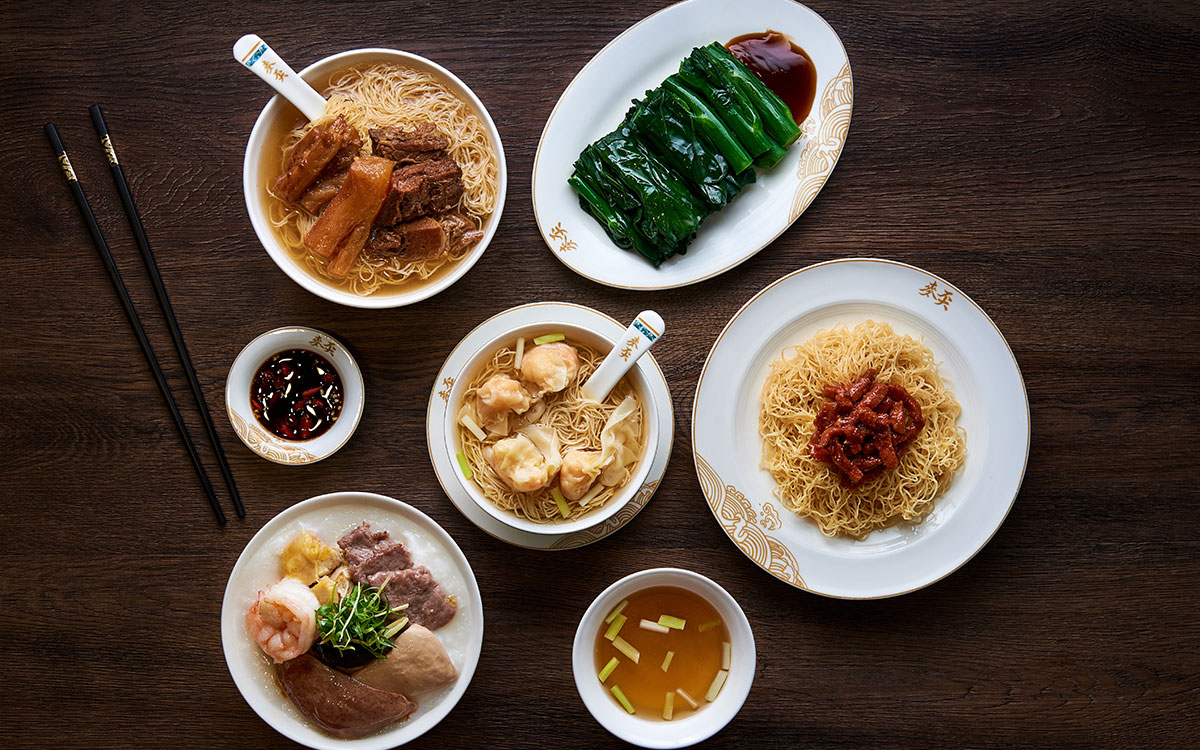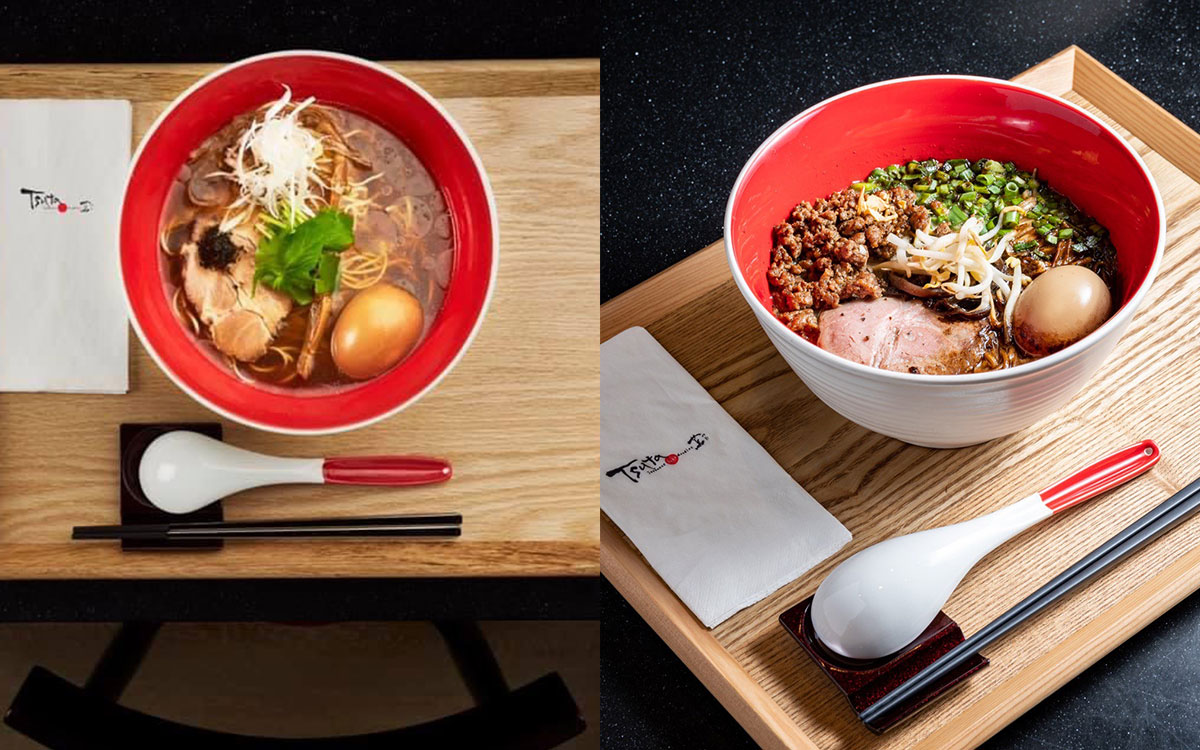searching...
see all result
No entries
- About Us
- Tourist Information
- Services & Facilities
- Member Privileges
- Gift Card
- Shop Online
There’s nothing more comforting and nourishing than a steaming bowl of noodles, especially as the colder months are approaching. Typically made with humble ingredients such as wheat, egg, plain flour, and water – noodles, right off the bat, may not sound like a complicated dish to master, yet how different cultures put their own spin on a simple noodle dish is fascinating.
Simplicity is key
Traditionally served uncut, to symbolize longevity in Chinese culture, noodles are seen in almost any special occasions like birthdays and new years.
Crystal Jade’s La Mian with Scallion Oil is a stripped-back exemplification of how a simple noodle dish needs nothing more than fresh ingredients and superb culinary techniques. Oil rendered from the deep-frying of fresh scallion packs a punch. Every strand of noodles is dressed in the glistening scallion oil and the aroma is just out-of-this-world!
Wonton noodles essentially define Hong Kong’s gastronomic scene. Mak’s Noodle is here to elevate the locals’ favorite. The soup base is a crustacean medley of shrimp roe and dried flatfish. When it’s joined by the luscious wonton and house-made egg noodles, no one will ever look at quintessential wonton noodles the same way.


To a T(ea)
No trip to Taiwan is ever complete without a beef noodle soup or a bubble tea on the itinerary. As Taiwan’s Aboriginal culture meets its rich Japanese colonial history, Taiwanese cuisines have come a long way, and evolved from night market specialties to more lavish renditions.
Du Hsiao Yueh sees no exception. Dan Zai Noodles might have been many diners’ go-to for years, thanks to its century-old recipe, yet for those who are ready to venture out, look no further than Tikuanyin Tea Noodles. Roasted for 18 hours with high-mountain Tikuanyin Tea, a premium oolong tea from Taiwan, the noodles are a deft showcase of the calming brew, in the most unexpected way possible. The herbaceous flavor of the noodles is lifted as they mop up the selection of special sauces served on the side.
Oh crab!
As the noodle culture travels across the continent to South-east Asia, the battle gets more intense on the palate, with richer soup bases and flavors await.
Nha Trang’s Signature Beef Pho is a comforting and homey bowl that probably needs no introduction. What catches our eyes on the menu, is the bright-red hue that screams upscale Vietnam fare. The House Special Crab Rice Vermicelli sits in a hearty bowl of tomato soup, brimming with a complex umami from fresh crab and shrimp.
Star quality
Japanese ramen started off more as a budget grub, especially among the blue-collar workers. As food shortage and famine hit Japan after World War II, the majority of the population had to rely on the government’s provision of food, or turned to the black market, where ramen stalls were found back in the day.
Today, with noodles that are often made from scratch and broth with full-blown chicken or pork flavor, Japanese ramen dominates the culture’s culinary arena, not just as an all-nighter fuel, but a refined delicacy.
How refined, you asked? Tsuta, for instance, is the world’s first Michelin-starred ramen joint. So excuse us for being a bit torn between two signature bowls. The Shoyu Soba is a truffle-infused classic brought over from Tokyo, while the Ajitama Kurobishio Soba is doused in a garlicky soup base, finished with black pepper for some added drama.

Say “cheese”
Pasta lies in the heart of Italy’s noodle culture, from simple penne and fettuccine, to fancy ravioli and lasagna. The Italians’ love for pasta is hard to miss as they perfectly nail the pairing between pasta shapes and sauces for centuries.
Many freshly-cooked pasta dishes come with the finesse of parmesan shavings. Palco is here to take that finishing touch to a whole new level, with Chef Ken serving his Signature Spaghetti with 24 Months Parmesan Cheese tableside for his diners. An earthy truffle scent permeates as the steaming-hot spaghetti noodles are tossed into the cheese wheel, soaking up all the incredible flavors that would just convince any calorie-counter to dig in.
Noodles literally come in all shapes and forms. Some are kept simple but brilliant, some shine with the soup bases and sauces, others are here to create theatrical affairs that titillate our senses. What is your absolute favorite of all?